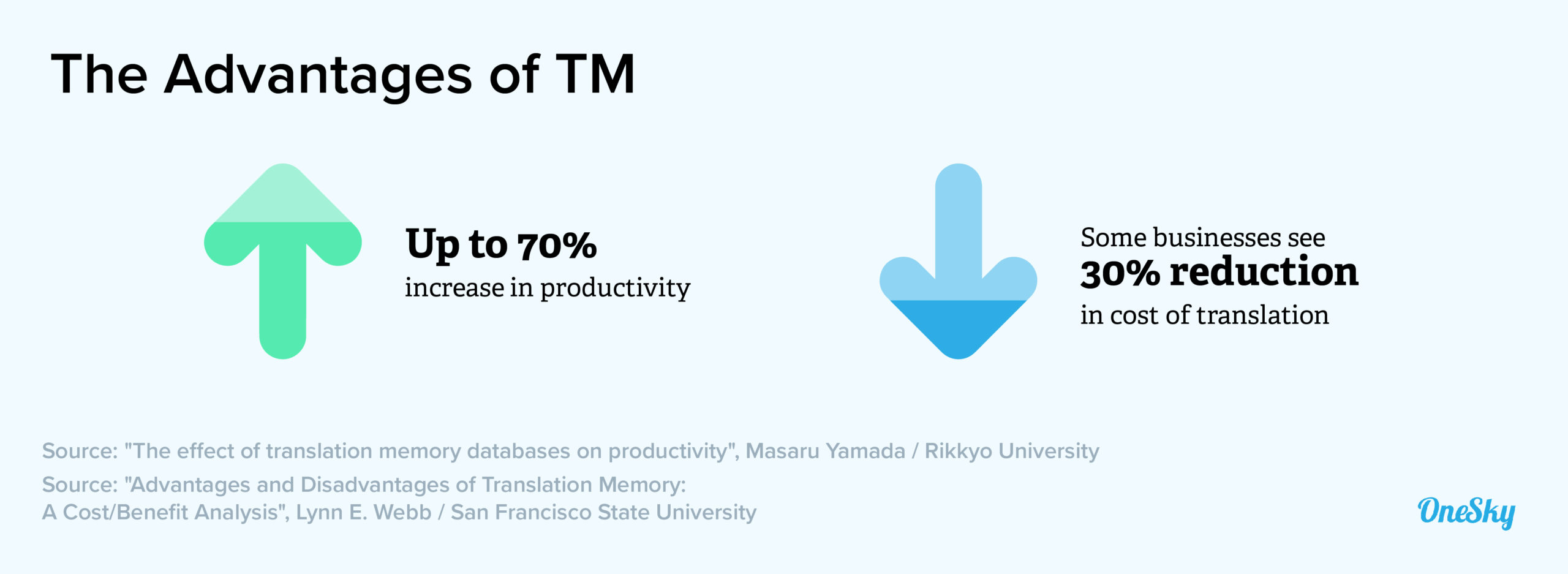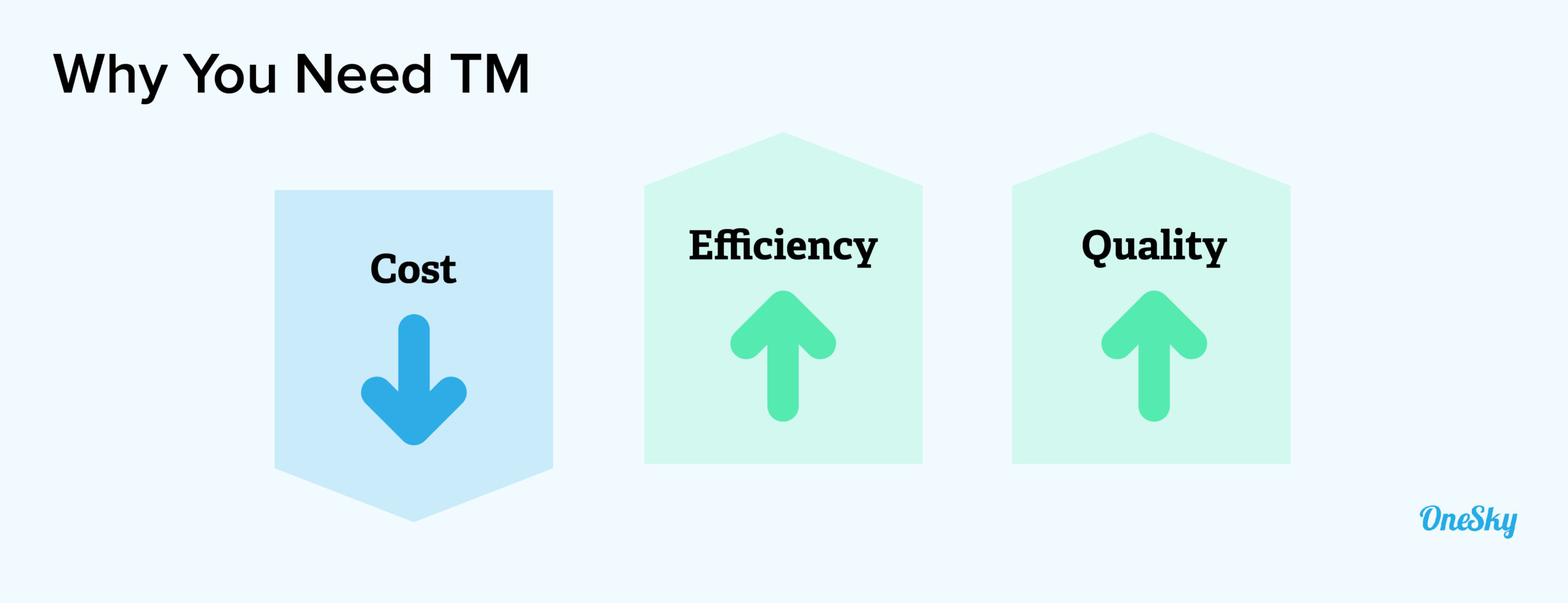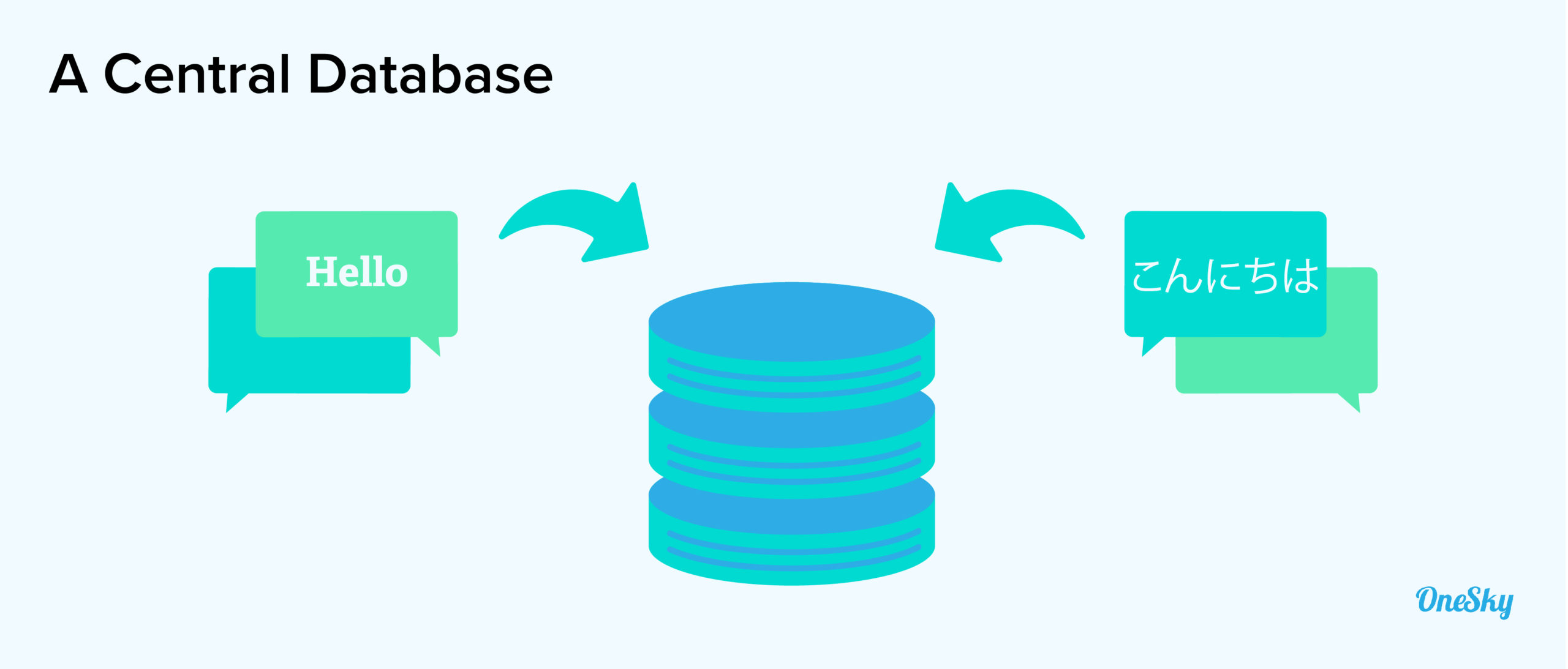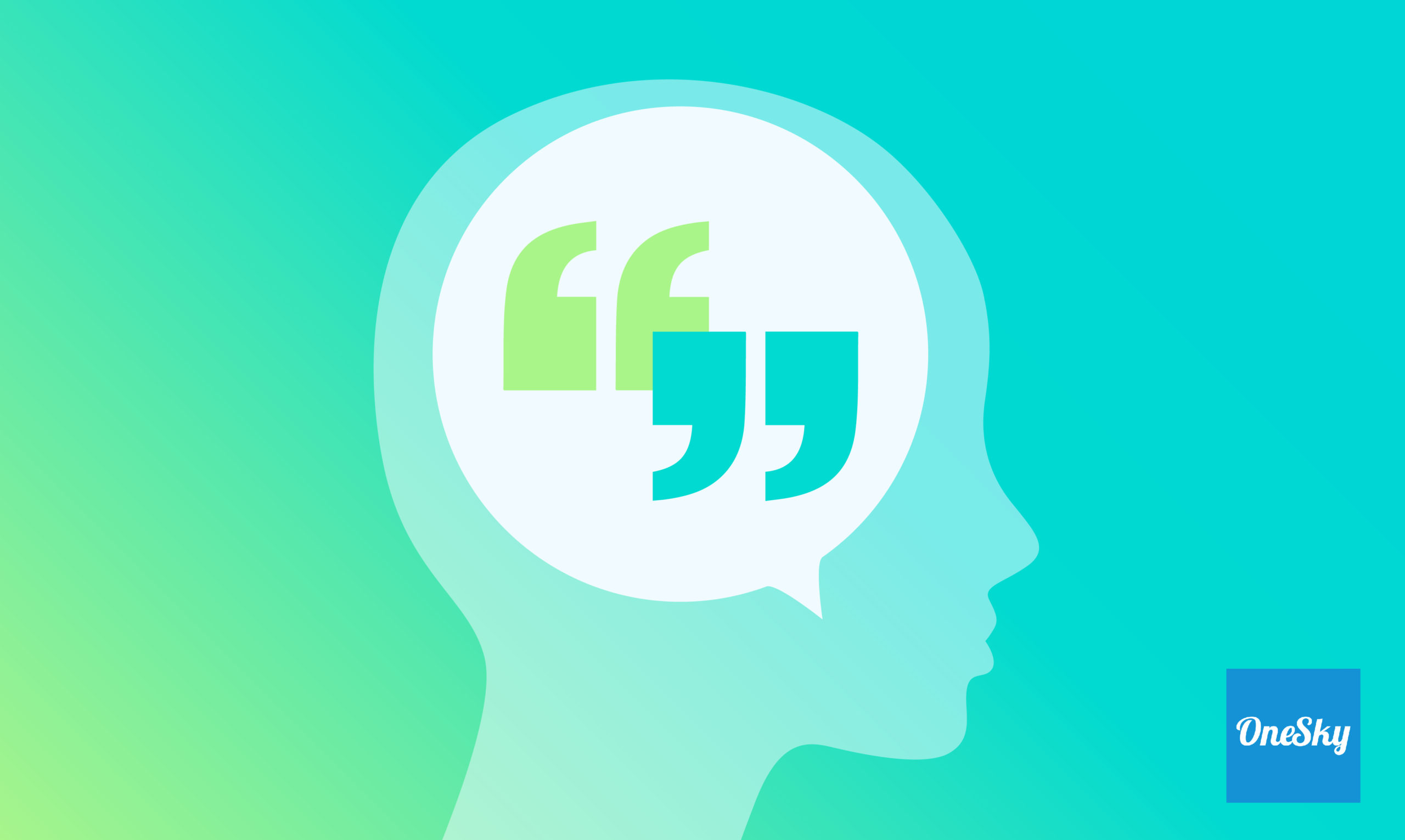How Translation Memory Makes Localization Easier and More Affordable
If you were to analyze the localization process, you would find that translation is usually one of the most time-consuming components.
Professional translators are much more skilled than any algorithm, but they need time to think about every sentence. If your app, website, or game contains thousands of words, it’s going to take a while.
One way to speed up the process and reduce the cost is by using translation memory. This technology provides instant access to previous translations, so your translator never needs to repeat their work.
Interested in learning more about this translation tool? Keep reading for a closer look at the technology and the potential benefits for your business.
What Is Translation Memory?
In simple terms, translation memory (TM) is a database of previously translated content.
When professional translators begin work on new content, they can query this database to find any phrase or sentence that has already been translated in the project.
If an exact match is found, the TM software will provide the correct translation. Where the match isn’t exact (“fuzzy”), the professional translator can make manual adjustments as required.
Translation memory can be utilized for many different projects. Some common use cases include:
- Software localization
- Mobile app localization
- Game localization
- Translating technical documentation
- Translating support portals
- Translating legal documents
- Localizing product descriptions
Many professional translators access translation memory through specialist TM software. The technology is also available through some translation management systems and localization solutions, including OneSky.
Either way, it is a powerful tool in the hands of a professional translator.
Research by Masaru Yamada of Rikkyo University found that translation memory can increase translation productivity by up to 70%, depending on the type of content.
From a business perspective, the numbers are just as eye-catching.
A study by San Francisco State University found that multinational manufacturer, Bernhard Beumer Maschinenfabrik KG, saw a 30% reduction in the cost of translation after adopting translation memory.

How Does Translation Memory Work?
While translation memory is designed for use by professional translators, it’s still good to know how it works. Here is the usual workflow:
1) Create or import translation memory – Most systems support several file formats. Translation Memory eXchange (TMX) files can hold multiple databases.
2) Import content for translation – You can usually do this via a simple file upload. OneSky supports around 40 different file formats.
3) Review suggested translations – The software will pick out matches between your source content and the translation memory, and then suggest appropriate translations. The human translator can accept these suggestions with a click, or make some adjustments.
Match Scoring
To make it easier for translators to assess these suggestions, the translation memory tool in OneSky rates every match with a percentage.
The algorithms that make these judgments take into account the entirety of each sentence. This ensures that words are assessed in context.
- A rating of 100% is an exact word-for-word match
- A score of 101% indicates that both the words and the context are exactly matching
- Lesser scores are given to sentences that share some words with database entries, but exhibit key differences
What Are the Benefits of Translation Memory?
It’s easy to see why translation memory is a popular tool with professional translators. But what can this technology bring to your business? Here are some of the potential benefits:
Faster Translations
Perhaps the primary benefit of using translation memory is that your professional translators can avoid repeating their work. This automation can significantly reduce the turnaround time for any localization task.
This benefit grows with every new task. As content is translated and added to the database, your translator will be able to use more and more automation.
On a business level, this means you can push through updates faster and launch into new markets sooner.

More Affordable Translations
When professional translators can spend less time on manual translation, projects can be completed at a lower cost.
This means small and medium-sized businesses can localize their products and services on a relatively small budget, without compromising on quality. For larger businesses, the reduction in cost associated with translation memory makes it possible to localize for more markets.
In both cases, this can allow you to reach millions more potential customers.
Improved Translation Quality
When every word has to be translated by hand, there is a reasonable chance that even the most reliable human translator will make an error. While machine translation does not make typos, it lacks the necessary human insight to deliver flawless translations.
With translation memory, you avoid these problems. The process is overseen by an experienced human translator, but they benefit from the input of an automated tool. As a result, you should receive the best possible quality of translation.
Better Consistency in Translation
There is often more than one way to translate a word or expression into another language. Some professional translators will choose one approach, while others may select an alternative.
This lack of consistency can cause a problem in some localization projects. For example, you might want your call to action to use the same text every time.
With translation memory, consistency is guaranteed. Once a particular word or phrase is translated, it will be stored in the database forevermore. Even if a different person works on your project, they will have your preferred translations to hand.
Better Technical Translations
Some localization projects require your translator to dive into a world of technical jargon. This applies to businesses that operate in law, finance, medicine, development, engineering, and many other fields.
Even a professional translator with specialist knowledge may have to research the correct translation for certain terms. This process can be extremely time-consuming, and it can prevent smooth collaboration between different translators.
With translation memory, your translators only need to look up the correct translation once — after that, the database will remember the right word.
Centralized Translation
In businesses with multiple products or departments, it is all too easy to waste resources on translating the same content. This could be anything from entire documents to the smallest details of a software interface.
By using a centralized translation memory, you can avoid duplicating your efforts. Entire sections can be recycled in seconds and shared across multiple projects within your organization.
For example, your marketing department can easily grab content that was originally translated for your support team.

Why You Should Use a TMS for Translation Memory
In order to access the many benefits of translation memory, you need to choose software that supports this feature. While quite a few standalone tools are available, you may be better off using a TMS (translation management system).
As the name implies, these systems help you manage the entire translation process through a visual interface. It’s like WordPress for localization.
Some TMS platforms have translation memory built in. With OneSky, you can import and export databases with ease, and share translation memory throughout your organization.
Aside from translation memory, there are many other potential benefits to using a translation management system. With an advanced solution like OneSky, you can:
- Quickly extract content from code
- Update your translations quickly
- Get full version tracking on localization
- Access machine and human translation in one workflow
- Use on-device testing to check for UI problems
These features go way beyond translation. A good TMS can help your marketing staff to publish content faster, and can reduce the amount of time your technical and product teams will need to spend on localization.
Get Started With Translation Memory Today
With an end-to-end workflow that includes translation memory, OneSky is a powerful localization solution that can save you time and money.
We use advanced algorithms to assist our professional translators, with support for more than 50 different languages. As a result, you get a fast turnaround and high quality every time — with no minimum order.
Sign up free today to get started!



 Written by -
Written by - 




 Written by
Written by 



Great, your post is helping me a lot. I would love to see more about it. Keep sharing and updated. Also share more posts. Thank you.